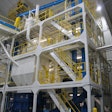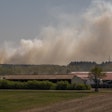Since I began my tenure as Feed & Grain’s editor, OSHA’s 2009 Letter of Interpretation regarding bin entry and sweep auger operation has remained a point of strife and confusion among our readers.
In the letter, a response to an insurance agent’s inquiry about the restrictions involved with employees working in a grain bin with an energized sweep auger, OSHA stated that it is in violation of the Grain Handling Standard (1910.272 (g) (1) (ii) to do so unless the employer eliminates all hazards posed by an unguarded sweep auger. Many believe the now infamous letter exposed a fundamental lack of understanding of how a sweep auger works — as well as how grain is handled — since the implications would make operation difficult, if not impossible, while remaining in compliance with the standard.
Politicians and industry leaders, like the National Grain and Feed Association (NGFA), have reached out to OSHA, but despite their efforts, the agency has failed to deliver concrete guidance for acceptable procedures or alternatives for in-bin energized sweep auger operation. However, more than three years later, as these cases are making their way to litigation, grain companies are finally getting a glimpse of what may be expected of them.
Recently, attorneys in Epstein Becker Green’s national OSHA practice group made headway when representing an Illinois grain handler, who despite having “employed a combination of administrative and engineering controls to ensure that no employee was ever within the zone of danger,” received a citation for allowing an employee to operate a sweep auger while in the grain bin.
The law firm contested the citation, and worked with an OSHA area director and regional administrator to develop a set of safety principles to satisfy the “equally effective means or methods” language of the grain standard.
Ultimately, OSHA withdrew the citation; and as part of the settlement agreement, the company will incorporate a set of “10 Sweep Auger Safety Principles,” which if satisfied, would allow an employee to work inside a grain bin with an energized sweep auger. It also developed and submitted for OSHA’s review and approval a “Sweep Auger Policy,” which outlines engineering and administrative controls used to ensure worker safety.
Attorney Eric Conn, head of OSHA practice with Epstein Becker Green, is confident this ruling may guide future policy, and commends the willingness of the agency to work with his client to find a reasonable solution.
While the outcome of this settlement is a step in the right direction, on a national level, an elevator who adheres to these principles is not guaranteed protection from a citation until this or another directive becomes final policy, warns Jess McCluer, NGFA’s director of safety and regulatory affairs.
The outcome of this case may not be the final word on the issue, but it does point to a potential resolution in the near future. To read a detailed account of the case as told by the attorneys involved, click here.















